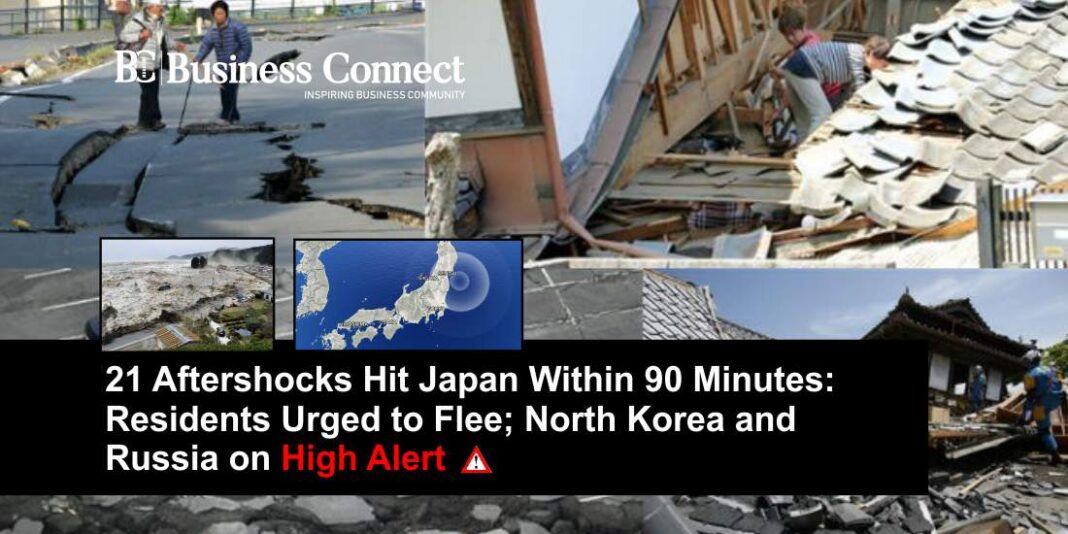21 Aftershocks Hit Japan Within 90 Minutes: Residents Urged to Flee; North Korea and Russia on High Alert
Written by Sanjay Kumar
Japan
Country in East Asia
- Capital: Tokyo
- Government: Democracy, Parliamentary system, Unitary state, Constitutional monarchy
- Population: 12.57 crores (2021) World Bank
- Prime minister: Fumio Kishida
- Dialing code: +81
- Gross domestic product: 4.94 lakh crores USD (2021) World Bank
- Area: 377,973 km²
As the world welcomed the dawn of 2024 with festive fireworks, Japan faced a catastrophic start to the new year. A powerful earthquake, measuring 7.6 on the Richter scale, struck central Japan’s Ishikawa area on Monday, January 1, triggering a series of 21 aftershocks within 90 minutes.
The quake caused widespread damage, power outages for over 30,000 people, and generated tsunami warnings across Japan’s coastal areas. The impact extended to North Korea, South Korea, and Russia, all on high alert for potential tsunami waves.
Key Points:
Tsunami Sweeps South Korea:
A tsunami, initially measuring 67 cm (2.2 ft), reached South Korea’s east coast following the massive earthquake in Japan.
Authorities cautioned that the waves might intensify beyond the initial measurement and persist for over 24 hours.
North Korea and Russia on Alert:
North Korea issued tsunami warnings for its coast, anticipating waves exceeding 2 meters.
Russian officials alerted residents on Sakhalin Island, warning of potential impact on the island’s west coast.
Varied Tsunami Heights:
Tsunami waves, ranging from one meter (three feet) to possibly five meters high within 300 kilometers of the epicenter, crashed into the coast.
Japan’s Response:
Japan initially issued a tsunami warning for its entire West Coast, later downgraded but still urging coastal residents not to return home.
A vivid warning message, “Tsunami! Evacuate!” flashed across television screens, instructing specific coastal areas to immediately evacuate.
Historical Context:
Japan, a quake-prone nation, faced its most significant tsunami warning since the 2011 disaster that led to meltdowns at a nuclear plant.
At least six homes were damaged, with reports of people trapped inside. Wajima city in Ishikawa Prefecture experienced a fire, and over 30,000 households endured power outages.
Ongoing Concerns:
The Meteorological Agency emphasized the likelihood of more major quakes in the region over the next week, especially in the next two or three days.
Conclusion:
As Japan grapples with the aftermath of a seismic onslaught, neighboring nations stand vigilant against potential tsunami threats. The resilience of the affected communities is tested once again, echoing the haunting memories of the 2011 disaster. The international community remains on high alert as the region braces for potential further seismic activity in the coming days.


